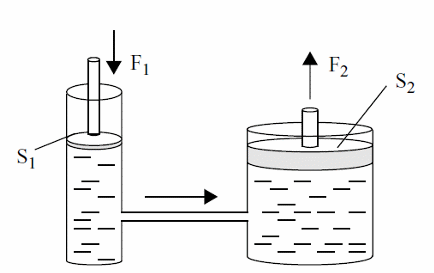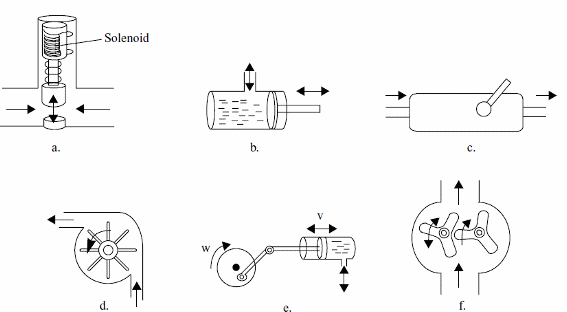
Mechanical advantage is obtained in the configuration shown by the figure and can be calculated by the next formula:
Formulas
a) Force gain
F1/F2 = S1/S2
Where:
F1 is the force applied to the small piston
F2 is the force applied to the large piston
S1 is the are of the small piston
S2 is the are of the large piston
b) displacement
F1/F2 = d2/d1
Where:
F1 is the force applied to the small piston
F2 is the force applied to the large piston
d1 is the displacemente of the small piston
d2 is the displacement of the large piston
c) TMA (Theoritical Mecanical Advantage)
TMA = F2/F1 = d1/d2 = S2/S1
Where:
TMA is the Theoritical Mechanical Advantage
F1 is the force applied to the small piston
F2 is the force applied to the large piston
d1 is the displacemente of the small piston
d2 is the displacement of the large piston
S1 is the are of the small piston
S2 is the are of the large piston
Valves
Valves are devices used to allow a fluid to flow only in one direction.
Figure 2 shows the typical constrictuion of some valves.

(a) automatic
(b) manual valve
(c) derivation valve
(d) solenoid valve
Practical Hydraulic Devices
Solenoids combined with pistons and valves can result in devices with applications in mechatronics. Figure 3 shows some of combinations with applications in practical designs.

(a) Solenoid valve
(b) Solenoid actuator
(c) Hydraulic switch
(d) Electric pump
(e) Rotary to linear hydraulic converter
(f) hydraulic motor
(g) Hydraulic motor



